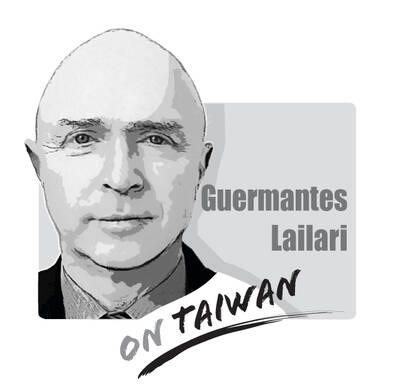The dust is settling over the Jan. 14 elections and many a commentator has weighed in with the conclusion that this was a vote for “stability,” in particular across the Taiwan Strait.
I would disagree, for a number of reasons, which will be elaborated on below. However, first, I would like to mention that I speak from the perspective of a long-time Taiwan observer, who started to follow and analyze the country’s political developments in the late 1970s, and who experienced Taiwan’s momentous transition to democracy in the late 1980s and early 1990s.
During the recent election campaign, I was “on the ground” with a delegation from the International Committee for Fair Elections in Taiwan (ICFET), headed by former Alaska governor and senator Frank Murkowski. We visited Greater Kaohsiung, Greater Tainan, Greater Taichung and Taipei and met with representatives from all three major political parties participating in the elections, the Chinese Nationalist Party (KMT), the Democratic Progressive Party (DPP) and the People First Party (PFP).
The ICFET observer group will come out with its report in the near future, but I can already highlight two major conclusions:
One was that the elections were only partly fair because of the authoritarian legacy and widespread vote-buying, combined with extensive use of administrative power and party assets. In the 2008 presidential campaign, then-presidential candidate Ma Ying-jeou (馬英九) promised to divest the party of these assets, but this never happened.
The second element of unfairness in the recent election was China’s influence and economic leverage. The Washington Post recently published an article about a Taiwanese businessman who had invested in China, influencing the elections through his wealth and control of news media. However, this was only one element in the pervasive influence China exerted in these elections: The “agricultural purchasing missions” to southern areas and the throttling back of tourist groups prior to the polls were other means of “subtle” influence.
The bottom line is that the playing field was not level. In particular, the uneven access to resources is detrimental to the democracy we all want to see flourish in Taiwan
One can not thus say that it was a vote for “stability,” but more a vote out of a fear of instability. And this fear of instability was induced by both the Chinese side, through a number of statements that a choice for the DPP would lead to a break in economic relations, and the KMT itself, which played up these concerns.
What is the net result of a win for Ma, the KMT and Taiwan? In the short term, there may be a fictitious peace and quiet, but the Chinese leaders will interpret the situation as going their way and will pressure Ma to start “political talks.” This will put increasing pressure on the country’s democracy and increasingly diminish the freedoms and liberty Taiwanese achieved in their transition to democracy.
The ultimate question is whether Taiwanese will be able to freely determine their future as a democratic nation. Its authoritarian heritage and China’s shadow over the recent elections have already significantly reduced this freedom.
Gerrit van der Wees is editor of Taiwan Communique, a publication based in Washington.

Chinese state-owned companies COSCO Shipping Corporation and China Merchants have a 30 percent stake in Kaohsiung Port’s Kao Ming Container Terminal (Terminal No. 6) and COSCO leases Berths 65 and 66. It is extremely dangerous to allow Chinese companies or state-owned companies to operate critical infrastructure. Deterrence theorists are familiar with the concepts of deterrence “by punishment” and “by denial.” Deterrence by punishment threatens an aggressor with prohibitive costs (like retaliation or sanctions) that outweigh the benefits of their action, while deterrence by denial aims to make an attack so difficult that it becomes pointless. Elbridge Colby, currently serving as the Under
The Ministry of the Interior on Thursday last week said it ordered Internet service providers to block access to Chinese social media platform Xiaohongshu (小紅書, also known as RedNote in English) for a year, citing security risks and more than 1,700 alleged fraud cases on the platform since last year. The order took effect immediately, abruptly affecting more than 3 million users in Taiwan, and sparked discussions among politicians, online influencers and the public. The platform is often described as China’s version of Instagram or Pinterest, combining visual social media with e-commerce, and its users are predominantly young urban women,
Most Hong Kongers ignored the elections for its Legislative Council (LegCo) in 2021 and did so once again on Sunday. Unlike in 2021, moderate democrats who pledged their allegiance to Beijing were absent from the ballots this year. The electoral system overhaul is apparent revenge by Beijing for the democracy movement. On Sunday, the Hong Kong “patriots-only” election of the LegCo had a record-low turnout in the five geographical constituencies, with only 1.3 million people casting their ballots on the only seats that most Hong Kongers are eligible to vote for. Blank and invalid votes were up 50 percent from the previous
Japanese Prime Minister Sanae Takaichi lit a fuse the moment she declared that trouble for Taiwan means trouble for Japan. Beijing roared, Tokyo braced and like a plot twist nobody expected that early in the story, US President Donald Trump suddenly picked up the phone to talk to her. For a man who normally prefers to keep Asia guessing, the move itself was striking. What followed was even more intriguing. No one outside the room knows the exact phrasing, the tone or the diplomatic eyebrow raises exchanged, but the broad takeaway circulating among people familiar with the call was this: Trump did